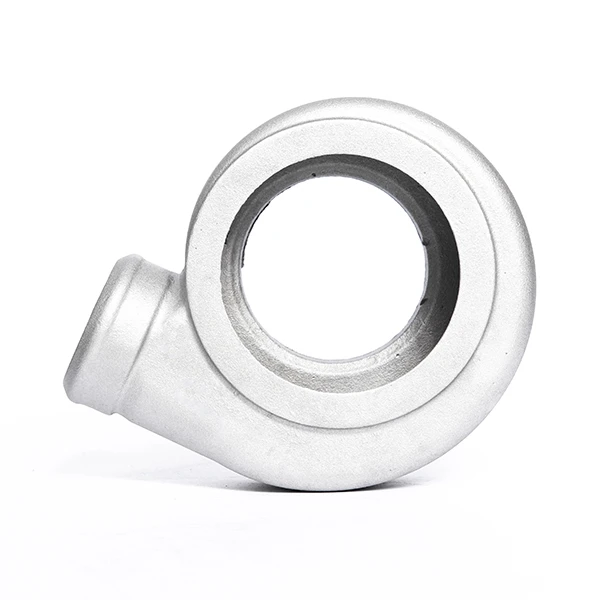Mobile:+86-311-808-126-83
Email:info@ydcastings.com
vertical impeller
Understanding Vertical Impellers Design, Applications, and Benefits
Vertical impellers play a critical role in various fluid movement applications across several industries, including wastewater treatment, chemical processing, and even agricultural irrigation. Unlike horizontal impellers, vertical types are specially designed to optimize fluid flow in specific orientations, offering unique benefits and functionalities. This article delves into the design characteristics, applications, and advantages of vertical impellers in various sectors.
Design Characteristics of Vertical Impellers
Vertical impellers are mounted vertically, allowing them to be submerged deeply into liquids. Their design is tailored to enhance mixing, pumping, and aeration processes. The shape and size of these impellers can vary significantly, depending on the intended application. Common designs include open, semi-open, and closed types, each offering distinct fluid dynamics benefits.
One important feature of vertical impellers is their ability to utilize gravity to maintain fluid motion. This natural force helps increase the efficiency of the impeller while reducing energy consumption. The blades of vertical impellers can also be tailored to specific flow patterns, including axial or radial flow, which affects how fluids are drawn in and expelled.
Applications of Vertical Impellers
Vertical impellers find their niche in various applications. In the wastewater treatment industry, they are commonly used for aerating and agitating large volumes of water. The vertical orientation allows them to efficiently mix air into wastewater, promoting aerobic biological processes that help break down organic matter.
In chemical processing, vertical impellers are used for mixing and homogenizing different components. Their design enables effective blending of viscous materials or those that tend to settle. Moreover, due to their efficient pumping capabilities, vertical impellers are often utilized in transferring liquids between production stages.
vertical impeller

Agricultural applications also benefit from vertical impeller technology. These impellers facilitate irrigation systems by effectively distributing water across fields. The vertical orientation ensures that water reaches deeper root zones, promoting healthier crop growth.
Advantages of Vertical Impellers
The advantages of vertical impellers are manifold. Firstly, their design provides excellent mixing capabilities, which is essential in processes requiring uniform distribution of chemicals, nutrients, or biological components. The axial flow generated by these impellers ensures thorough circulation and reduces the chances of dead zones in tanks or basins.
Secondly, vertical impellers tend to occupy less floor space compared to horizontal systems, making them ideal for facilities where space is a constraint. Their vertical configuration allows for taller tank designs, maximizing the volume of liquids that can be processed without requiring a larger footprint.
Additionally, the maintenance of vertical impellers is often more straightforward than that of horizontal types. As the motor is located above the liquid level, access for inspections and repairs is typically easier, reducing downtime and operational costs. This ease of maintenance is critical in industries where continuous operation is necessary.
Another notable benefit is the energy efficiency of vertical impellers. Because they effectively utilize gravity and have been designed to minimize turbulence, they often consume less energy compared to alternatives. This reduced energy requirement not only lowers operational costs but also aligns with modern sustainability practices—an increasingly important aspect of industrial design.
Conclusion
In summary, vertical impellers are integral components in various industries, offering unique design advantages that cater specifically to the needs of fluid movement and processing. From wastewater treatment to chemical mixing and agricultural irrigation, their vertical configuration enhances performance while optimizing space and energy efficiency. As industries continue to focus on sustainability and efficiency, the role of vertical impellers is likely to grow, further underscoring their importance in modern engineering and manufacturing practices. Understanding their design characteristics and applications can lead to better system choices and enhanced operational productivity.
-
Why Should You Invest in Superior Pump Castings for Your Equipment?NewsJun.09,2025
-
Unlock Performance Potential with Stainless Impellers and Aluminum End CapsNewsJun.09,2025
-
Revolutionize Your Machinery with Superior Cast Iron and Aluminum ComponentsNewsJun.09,2025
-
Revolutionize Fluid Dynamics with Premium Pump ComponentsNewsJun.09,2025
-
Optimizing Industrial Systems with Essential Valve ComponentsNewsJun.09,2025
-
Elevate Grid Efficiency with High-Precision Power CastingsNewsJun.09,2025











